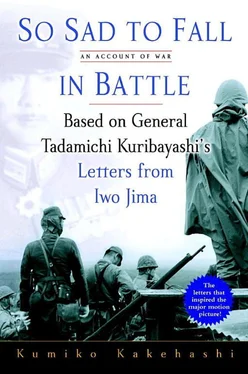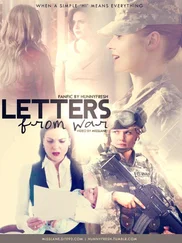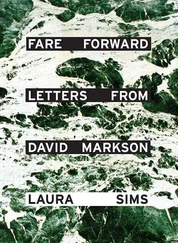Yamagiwa explained to me that there are white bones and black bones in the caves. The white bones belong either to men who were killed by bombs and bullets, or to those who got progressively weaker and died. The black bones belong to the men who were burned to death by flamethrowers.
Contemporary newsreels and photographs convey the awesome power of the American flamethrowers, which were able to turn a broad swath of ground into a sea of fire. The Americans also poured a mixture of gasoline and seawater into the bunkers, lit it, and roasted the soldiers within to death.
On the beach at the northern tip of the island, Yamagiwa and the rest of the group cremated the 135 sets of remains they had collected.
“They died out here so far to the south. We thought that cremating them even that much closer to the homeland was the least we could do.”
All of the participants had watched the fire burn throughout the night. Any bones that were left were placed in plain wood boxes and taken back to the homeland, while the remaining ashes were carefully hand-collected before being scattered into the sea.
“We tried to find a current that was flowing to the north for them. We stood on the beach for a long time, all of us shouting: ‘Go on now. Go on back to your homeland.’”
AFTER VISITING SEVERAL PLACES where engagements had occurred and a number of bunkers, we headed for Mount Suribachi, on the southern tip of the island. The road that leads to the summit follows the path the Americans took when they climbed up, clearing the way with their flamethrowers.
Mount Suribachi stands only 169 meters above sea level, but since there are no other mountains or uplands, you can take in the entire island from its summit. I use the word “summit,” but as the mountain is a dormant volcano I’m actually talking about the lip of the north side of the deep crater, an area only about the size of a soccer pitch.
On D-day plus four, a group of U.S. Marines raised the Stars and Stripes in this place, and the photograph of the event became famous as the “most beautiful picture of the war.” Just in front of where the base of the original flagpole stood, there now stands the American Armed Forces Victory Memorial, which was erected when the island was under American occupation.
A copperplate of the Stars and Stripes and a bas-relief of the marines raising the flag stand upon a white pedestal, and on either side are two V shapes, perhaps representing “victory.”
I noticed clusters of small pieces of metal clinging to the V-shaped parts of the memorial. I went up to have a closer look and they turned out to be chains with oval disks on them. Hundreds of them were hanging there.
They are identification tags stamped with tiny numbers and letters belonging to U.S. Marines. American soldiers wear these metal tags marked with their name and rank so as to identify them if they’re killed in action. These identification tags must be worn not just in combat, for training, or for maneuvers, but all the time.
Many of the marines who now come to Iwo Jima for training hang their identification tags on the memorial to honor the dead before they leave the island. The marines are proud to be a part of the same tradition as their predecessors who fought on the island some sixty years ago, and even now Iwo Jima remains holy ground for them.
The Medal of Honor is a decoration awarded in recognition of extraordinary acts of valor on the battlefield. During the four years of World War II, the marines earned a total of eighty-four Medals of Honor. Twenty-seven of these were awarded for the action on Iwo Jima—almost one third for a battle that lasted thirty-six days. This statistic alone shows why Iwo Jima is a battle that lives on in history.
Draped in hundreds of identification tags, the victory monument is inscribed with the words of Admiral Nimitz: “Among the Americans who served on IWO JIMA, uncommon valor was a common virtue.”
Of the six soldiers who raised the flag on Mount Suribachi, three were killed in the subsequent fighting. The remaining three returned in triumph to their homeland, where they were fêted as heroes and made to take part in a campaign to sell war bonds to help cover the cost of the war.
The American people gave them a wildly enthusiastic welcome at every stop of their national tour and purchased $26.3 billion worth of war bonds during that one summer. It was a sum equivalent to almost half the entire government budget for 1946.
A commemorative stamp with the photograph of the marines raising the flag was issued in July, less than four months after the battle itself ended. It was the first time in American history that living people had been featured on a stamp. One hundred and fifty million copies of the stamp were sold.
In 1954 the photograph was turned into the world’s tallest bronze statue, which went up in Arlington National Cemetery. The entire $850,000 cost was covered by donations from ordinary people.
The American people were first horrified at the casualties on Iwo Jima, then ecstatic at the hard-won victory, and the battle remains deeply engraved on the public consciousness even now. This explains why Kuribayashi, the man who was considered to have made America suffer more than anyone, may be better known in the United States than in Japan.
In May 2003, U.S. President George W. Bush made a speech declaring the end of major combat operations in Iraq. In it, he praised the military, saying: “The daring of Normandy, the fierce courage of Iwo Jima… is fully present in this generation.” Even after the passage of more than half a century, Iwo Jima remains a symbol of courage and victory for the United States.
A MEMORIAL ERECTED by the Japanese also stands on top of Mount Suribachi. The monument erected by the Americans commemorates their victory, but the Japanese monument is designed to commemorate and console their dead.
It is made of black granite, heavy and solid, and features a map of Japan made with stones from all the prefectures of the nation representing all the soldiers who fought at Iwo Jima, who came from almost every part of the country.
The greater part of the Japanese soldiers—officers and men—who fought on Iwo Jima were not career soldiers, but ordinary people: farmers, shopkeepers, businessmen, teachers, and student conscripts. They were people living normal lives who were drafted and dispatched to the island.
Carved on the top left of the map is the phrase Iô-Jima Senbotsusha Kenshôhi —“Monument to the Honor of the Fallen of Iwo Jima.” The stone itself was erected precisely one year after the island was restored to Japan.
As you stand there on the summit with the two memorials side by side—one commemorating victory, the other the ordinary lives that were lost—the south beach where the Americans landed looks so close you feel as though you could reach out and touch it.
It was in 1985, forty years after the war, that the south beach hosted the “Reunion of Honor.”
This was an event that brought together Japanese and American veterans, former friend and former foe alike. Its aim was twofold: to commemorate the fallen on both sides, and to swear peace to each other. Nowhere else have the participants in a battle that was so cruel, and that claimed so many lives, held a reunion ceremony on the very ground where they fought. But such an event took place on Iwo Jima. Including family members, a total of almost four hundred people—both Japanese and American—took part.
There is a striking scene in the video documentary made that day. The American and Japanese veterans and their families start out standing in separate groups, but as the ceremony ends, without either side seeming to take the initiative, they start drifting toward one another.
Читать дальше












